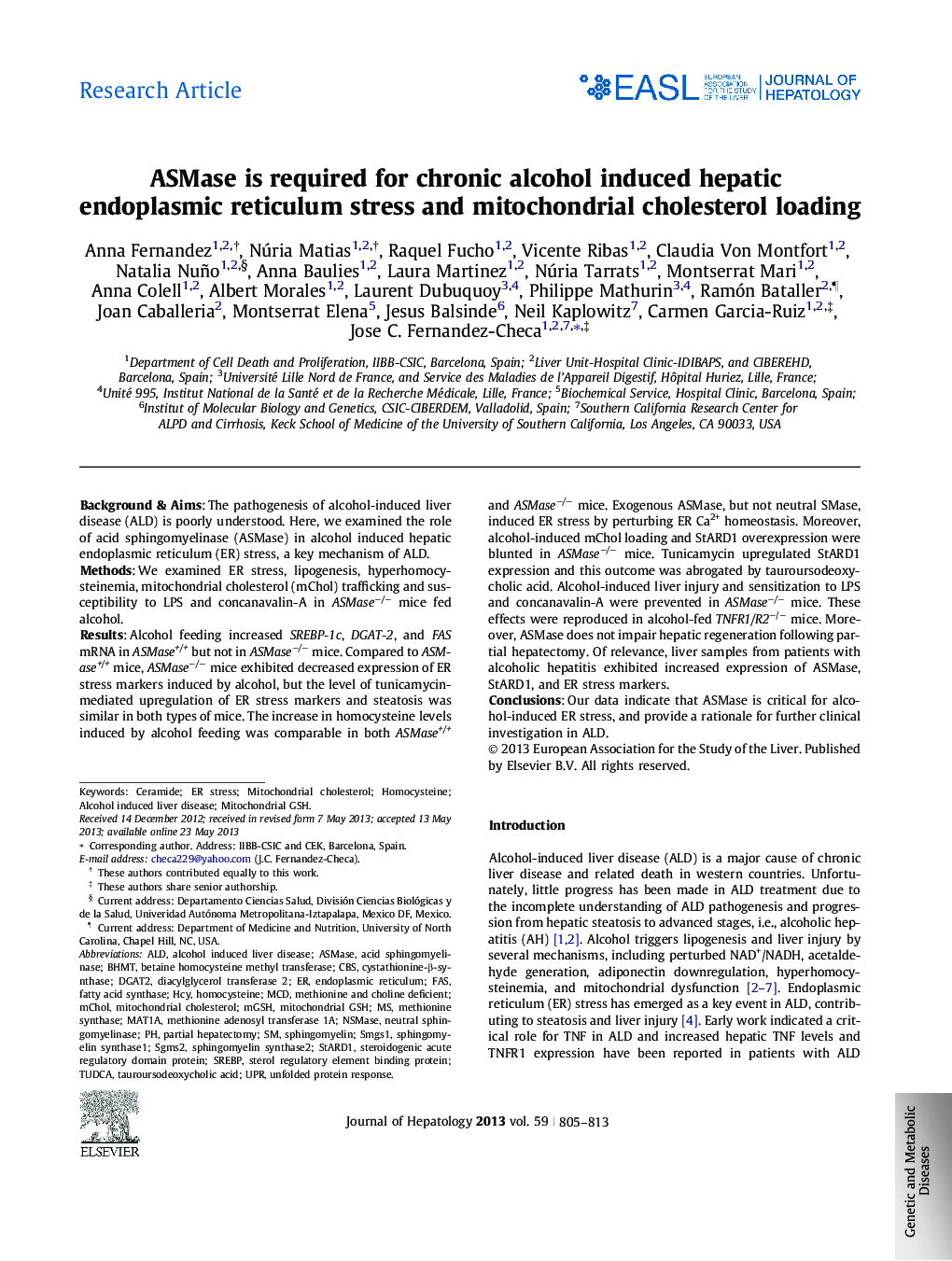| Article ID | Journal | Published Year | Pages | File Type |
|---|---|---|---|---|
| 6103814 | Journal of Hepatology | 2013 | 9 Pages |
Background & AimsThe pathogenesis of alcohol-induced liver disease (ALD) is poorly understood. Here, we examined the role of acid sphingomyelinase (ASMase) in alcohol induced hepatic endoplasmic reticulum (ER) stress, a key mechanism of ALD.MethodsWe examined ER stress, lipogenesis, hyperhomocysteinemia, mitochondrial cholesterol (mChol) trafficking and susceptibility to LPS and concanavalin-A in ASMaseâ/â mice fed alcohol.ResultsAlcohol feeding increased SREBP-1c, DGAT-2, and FAS mRNA in ASMase+/+ but not in ASMaseâ/â mice. Compared to ASMase+/+ mice, ASMaseâ/â mice exhibited decreased expression of ER stress markers induced by alcohol, but the level of tunicamycin-mediated upregulation of ER stress markers and steatosis was similar in both types of mice. The increase in homocysteine levels induced by alcohol feeding was comparable in both ASMase+/+ and ASMaseâ/â mice. Exogenous ASMase, but not neutral SMase, induced ER stress by perturbing ER Ca2+ homeostasis. Moreover, alcohol-induced mChol loading and StARD1 overexpression were blunted in ASMaseâ/â mice. Tunicamycin upregulated StARD1 expression and this outcome was abrogated by tauroursodeoxycholic acid. Alcohol-induced liver injury and sensitization to LPS and concanavalin-A were prevented in ASMaseâ/â mice. These effects were reproduced in alcohol-fed TNFR1/R2â/â mice. Moreover, ASMase does not impair hepatic regeneration following partial hepatectomy. Of relevance, liver samples from patients with alcoholic hepatitis exhibited increased expression of ASMase, StARD1, and ER stress markers.ConclusionsOur data indicate that ASMase is critical for alcohol-induced ER stress, and provide a rationale for further clinical investigation in ALD.
